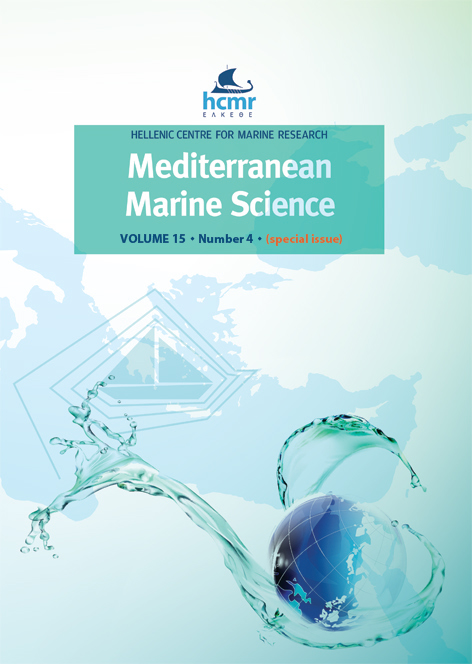INTER-annual/decadal variability of the north Aegean Sea hydrodynamics over 1960-2000

Abstract
Results from a high-resolution hindcast model experiment, supported by available observations, reveal an increasing salinity trend in the north Aegean during the Eastern Mediterranean Transient (EMT), largely controlled by increases in the flow rate and salinity of water masses of Levantine origin entering the domain through the Myconos-Ikaria strait as a response to an acceleration of the Aegean thermohaline cell. Changes in the Dardanelles inflow (increasing salinity) and in the surface freshwater flux (increasing Evaporation-Precipitation), although both contribute to a higher salt content of the basin during the EMT, play a minor role in the inter-annual/decadal variability of the freshwater budget. A long-term decreasing temperature trend is observed from the 1960s to the early 1990s. It is superimposed on the salinity-preconditioning phase over the 1980s and early 1990s. Both signals are, concomitantly, favouring conditions for intense Dense Water Formation (DWF) in the north Aegean Sea. In addition, the northward displacement of the Black Sea Water front over the EMT, leads to the expansion of convective cells towards the north and to higher formation rates associated with both colder and saltier surface waters.
Article Details
- How to Cite
-
VERVATIS, V., SKLIRIS, N., & SOFIANOS, S. S. (2014). INTER-annual/decadal variability of the north Aegean Sea hydrodynamics over 1960-2000. Mediterranean Marine Science, 15(4), 696–705. https://doi.org/10.12681/mms.852
- Section
- Special Issue MEDIAS
Authors who publish with this journal agree to the following terms:
- Authors retain copyright and grant the journal right of first publication with the work simultaneously licensed under a Creative Commons Attribution Non-Commercial License that allows others to share the work with an acknowledgement of the work's authorship and initial publication in this journal.
- Authors are able to enter into separate, additional contractual arrangements for the non-exclusive distribution of the journal's published version of the work (e.g. post it to an institutional repository or publish it in a book), with an acknowledgement of its initial publication in this journal.
- Authors are permitted and encouraged to post their work online (preferably in institutional repositories or on their website) prior to and during the submission process, as it can lead to productive exchanges, as well as earlier and greater citation of published work (See The Effect of Open Access).




